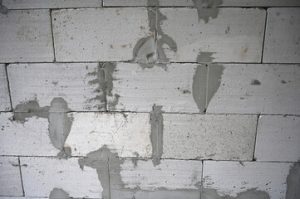Expert concrete repair and restoration help surfaces last longer while improving durability against wear and tear. Proper repairs save money compared to full replacements and eliminate trip hazards while enhancing curb appeal.

A thorough inspection of concrete damage is essential to plan the right repair method. This ensures that the repair will address the cause and prevent recurrence.
Inspection
Concrete surfaces may seem indestructible, but even the most durable structures are susceptible to damage. Repairing cracks, surface damage, and other issues promptly prevents their progression and improves safety, enhances appearance, and extends the lifespan of your concrete structures.
Expert technicians thoroughly inspect surface conditions and identify the best repair method. They examine crack dimensions and identify other factors that impact long-term repair success. This includes checking for soil conditions and identifying areas of damage caused by erosion or subsurface voids.
Before any concrete repairs begin, the damaged area is cleaned and prepped for application. Technicians use a pressure washer and specialty cleaning agents to remove contaminants like mold, mildew, and embedded dirt. They also make sure the surface temperatures are above 50 degrees Fahrenheit to ensure adequate material bonding.
Depending on the type of damage, technicians may need to widen the cracks slightly for a better surface fill. They then apply a concrete patching compound or crack filler to the damaged area, using specialized tools to ensure it is fully and evenly spread.
They then smooth the patched area to match the surrounding concrete. A sealant can then be applied to protect the repaired area from moisture, chemicals, and wear, extending its lifespan and improving aesthetics.
Preparation
Concrete is a durable and strong material, but even the toughest concrete surfaces can be affected by settling, soil movement, weather conditions, or heavy usage over time. Damaged concrete surfaces need prompt repair to prevent water infiltration, structural damage, and surface deterioration.
The type of crack and extent of damage determine the best repair method. Hairline cracks, for example, may be filled with a concrete crack filler or sealant to stop further damage and extend the life of the slab. Wider cracks need a more substantial repair solution, such as crack injection or foundation reinforcement.
Surface Preparation
Before repairing the damaged concrete, all cracks, chips, and stains need to be cleaned thoroughly. Moisture control is especially important because wet surfaces can prevent the bonding of the repair materials to the concrete matrix. Surfaces may need to be scrubbed with a wire brush, pressure washed, or chemically treated to clean and prepare the area for repair.
To repair cracks, technicians may use a chisel to widen the crack slightly, creating an inverted V-shaped groove that will aid in adhesion of the repair material. Then, they will apply a concrete crack filler or sealant using a caulking gun and follow the manufacturer’s instructions. Once the cracks are filled, they are smoothed to match the surrounding concrete and allowed to cure.
Filling
Concrete is strong and durable, but it can still become damaged over time. Whether your concrete has surface deterioration from heavy foot traffic or structural damage from settling or heavy loads, expert repair solutions are available to preserve and restore durability and beauty.
Begin with Cleaning
Start your repairs by cleaning the affected area to remove contaminants and allow for proper adhesion. A wire brush, broom, or vacuum can be used to sweep debris and dirt away from the crack or spalling area. Wider cracks may require a cold chisel or hammer to chip away unstable concrete and create a clean surface for repair.
Choose the Right Material
Next, select a concrete repair compound that best suits the size and type of the crack or surface issue. Liquid crack fillers are a good option for hairline or shallow surface cracks. For larger cracks, epoxy-based repair materials can be applied to provide additional strength and protection.
If you choose to use poly foam injection as your repair method, our experienced technicians will apply the appropriate amount of pressure to fill voids and expand the damaged concrete to lift the surrounding areas. This process will also help stabilize your repair for long-lasting durability.
Sealing
Concrete repair specialists use specialized materials to patch, fill, or resurface damaged areas. They choose the right product for the specific problem, taking into account dimensional characteristics (such as drying shrinkage and thermal coefficients), compressive strength, and flexural strength. They also consider surface requirements, such as abrasion resistance and water vapor transmission.
The next step is to clean and prep the damaged area for repairs. This includes removing loose concrete, debris, and dirt from cracks or the surface of the concrete. Wider cracks are sometimes widened slightly to ensure that the repair material adheres correctly. Then, the repaired surface is cleaned to remove contamination and sand or powder residue that can inhibit adhesion.
Finally, the repair is sealed. This helps to prevent moisture intrusion into the cracks or voids, which leads to further damage and potentially structural problems. It also protects against staining from harsh chemicals, inclement weather, and heavy foot traffic.
Repairing concrete surfaces is a smart investment that saves money compared to full replacements and keeps residential or commercial property safe and functional for years to come. Restoring concrete also enhances curb appeal and adds value to properties. Ignoring damage and attempting DIY repairs can lead to costly issues in the future, so trust your repairs to a professional. Contact us today to learn more about our expert concrete repair solutions.